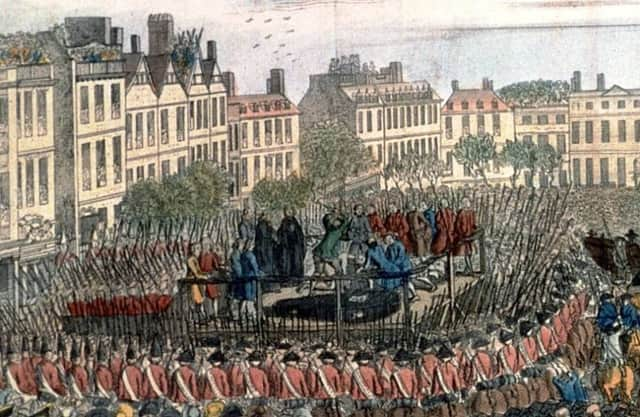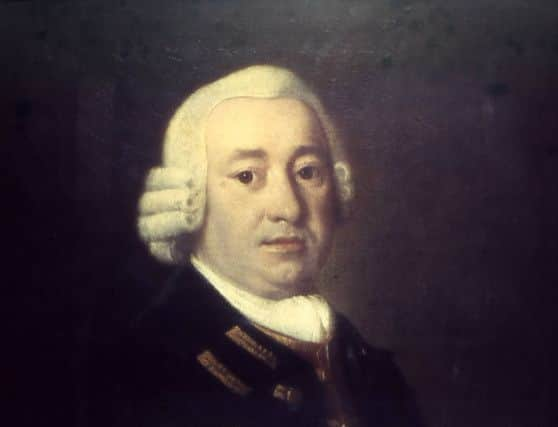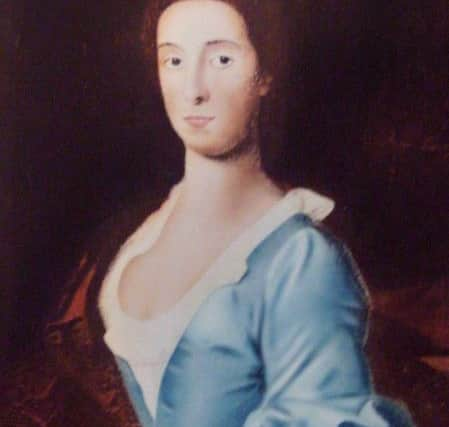No sympathy shown to Charlie's loyal supporter


Thousands of redcoat soldiers in the Government army of General Henry Hawley were driven from the field by Bonnie Prince Charlie’s clansmen supported by a number of prominent Lowland noblemen and their retainers.
Among them was William Boyd, the 4th Earl of Kilmarnock, then resident in Callendar House. He had married Lady Anne Livingston back in 1725, a decade after her father James, the Earl of Callendar, had lost his titles, house and lands for supporting Charlie’s father, the Old Pretender, in 1715. Lady Anne and her new husband were allowed to rent Callendar House by the new owners and he soon began to act as Falkirk’s first citizen.
Advertisement
Hide AdAdvertisement
Hide AdHe frequently presided at meetings of the Heritors and the Falkirk Merchant Society and in 1740 he was chosen as Worshipful Master of the Falkirk Lodge of Freemasons.


When Prince Charlie landed in the Highlands in 1745 the earl thought this offered his new family a chance to regain their titles and lands but hesitated because his own family had supported the Hanoverians in 1715.
Lady Anne urged him to stay out of the rising, fearing that her work to re-establish Episcopalian ‘‘meeting houses’’ would suffer if she was drawn into another failed intrigue.
The prince stayed the night at Callendar House on September 14 but Kilmarnock waited until after the Jacobite triumph at Prestonpans before writing to his wife “I am in my boots for the Prince”.
It was a decision he would live to bitterly regret.


Advertisement
Hide AdAdvertisement
Hide AdHowever, as a way of hedging his family bets, his son and heir James had enlisted in the Government army just in case. The Earl tried to raise a detachment of dragoons in Falkirk and from his family lands in Kilmarnock but was not all that successful.
He was given the rank of colonel in the Prince’s army, rode to Derby and back with Charlie and was in command of dragoons when the two armies met on that wet and windy afternoon in Falkirk.
His local knowledge was vital throughout this part of the campaign and he was again by the Prince’s side as the armies moved north to their final encounter at Culloden.
He was captured on the battlefield and there is a very poignant account of him being dragged bareheaded in the rain by his captors. At this moment his son James emerged from the redcoat ranks embraced his father and placed his own hat on the Earl’s head.


Advertisement
Hide AdAdvertisement
Hide AdHowever it was not that long before he had no head to put a hat on! Like the other leading nobles he was tried for treason and pleaded for his life saying he had made a great mistake and he really loved and admired King George II.
It was to no avail. The best the King could offer was to substitute the axe in place of the usual butchery. On August 18, 1746, he was executed on Tower Hill before a huge crowd of spectators.
His broken-hearted wife was said to have retired to Kilmarnock where she wept herself to death.
A portrait of the earl still hangs in Lodge 16 though the minute book for the period is missing.


Advertisement
Hide AdAdvertisement
Hide AdHis son who became Earl of Errol through his mother’s side lived on in Callendar House and played his part in Falkirk life until the arrival of William Forbes in 1783.
By then the failed rising was little more than a memory and the unhappy Earl was long forgotten.